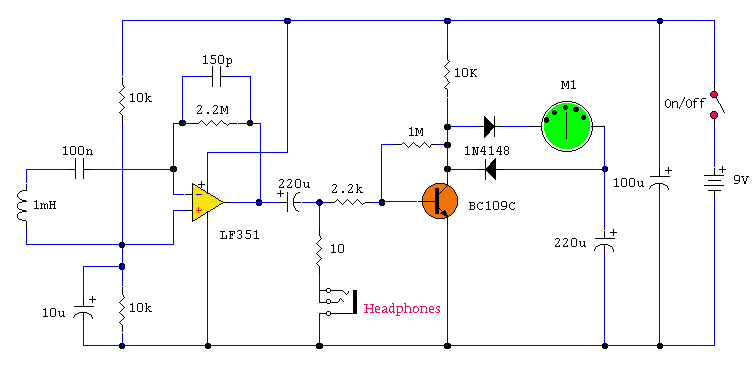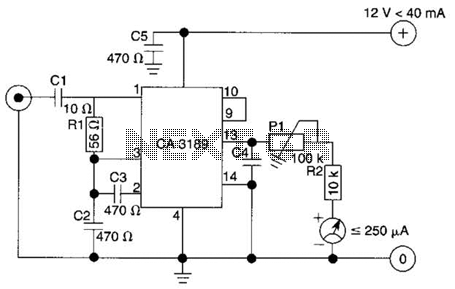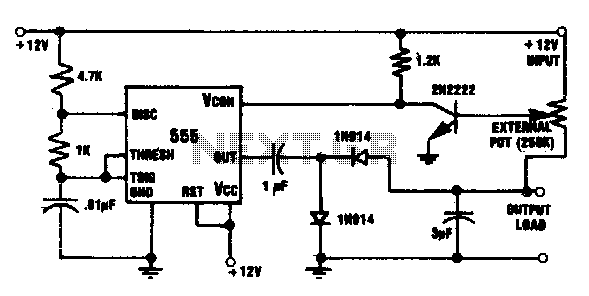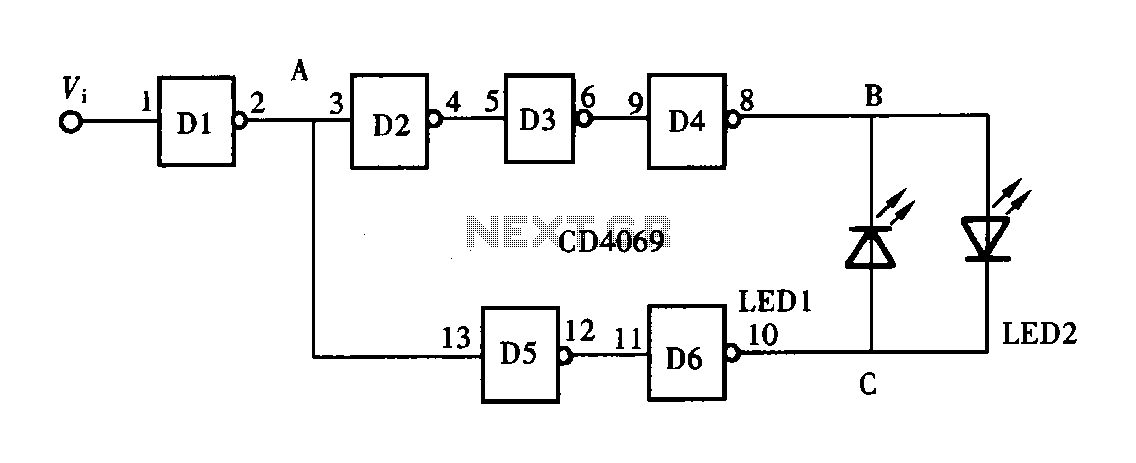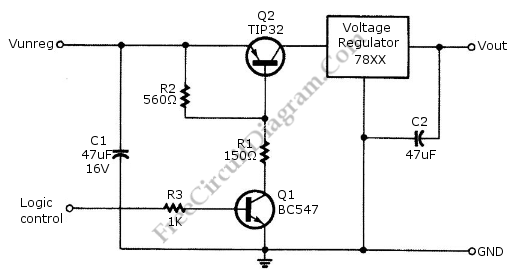
Logic Probe
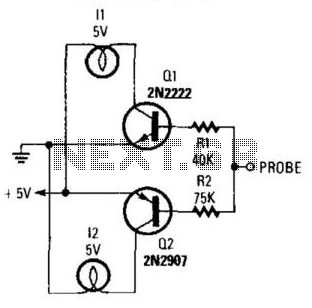
By connecting this circuit to a powered logic device, an indication of its status can be obtained. If the circuit is open, neither of the test lamps will illuminate. If the circuit is grounded, the low (or zero) lamp will illuminate. If a voltage between 3 to 6 V is present, the high-voltage lamp will illuminate. In addition to its application in logic testing, the probe is also useful for checking supply voltages and grounds. Resistors can be selected to activate the lamps at any desired threshold voltage within the component limits.
The described circuit serves as a simple yet effective voltage and logic level indicator, utilizing two test lamps to provide visual feedback on the status of a connected logic device. The circuit operates based on the principle of voltage detection, where the state of the circuit influences which lamp illuminates.
The circuit comprises two test lamps, typically LED indicators, connected in parallel with appropriate current-limiting resistors. The first lamp, designated as the low-voltage indicator, is configured to illuminate when the voltage is at or near zero, indicating a grounded condition. The second lamp, the high-voltage indicator, is designed to activate when a voltage between 3 to 6 V is detected, signaling the presence of a valid logic high state.
Resistor selection is critical for determining the activation thresholds for the lamps. By choosing resistors with specific values, one can fine-tune the circuit to respond to various voltage levels, ensuring that the indicators operate within the safe limits of the components used. This flexibility allows for customization based on different logic families or supply voltages.
For practical implementation, the circuit can be powered by the same supply voltage as the logic device being tested, simplifying the setup. The test probe can be connected directly to the output of the logic device, providing immediate visual feedback on its operational status. This makes the circuit an invaluable tool for troubleshooting and verifying the functionality of electronic circuits in various applications, including digital logic testing, power supply verification, and ground checking.
The overall design is straightforward, requiring minimal components, which enhances its reliability and ease of use. The circuit can be housed in a compact enclosure, with the test lamps visible from the outside, allowing for quick assessments without the need for additional measuring equipment. By connecting this circuit to a logic device that"s under power, you can get an indication as to its status. If the circuit is open, neither of the test lamps will light. If the circuit is grounded, the low (or zero) lamp will light. If 3 to 6 V are present, the high-voltage lamp will light. Other than its application in logic testing, the probe is also convenient for checking supply voltages and grounds. You can select resistors to turn the lamps on at any desired threshold voltage within the component limits.
The described circuit serves as a simple yet effective voltage and logic level indicator, utilizing two test lamps to provide visual feedback on the status of a connected logic device. The circuit operates based on the principle of voltage detection, where the state of the circuit influences which lamp illuminates.
The circuit comprises two test lamps, typically LED indicators, connected in parallel with appropriate current-limiting resistors. The first lamp, designated as the low-voltage indicator, is configured to illuminate when the voltage is at or near zero, indicating a grounded condition. The second lamp, the high-voltage indicator, is designed to activate when a voltage between 3 to 6 V is detected, signaling the presence of a valid logic high state.
Resistor selection is critical for determining the activation thresholds for the lamps. By choosing resistors with specific values, one can fine-tune the circuit to respond to various voltage levels, ensuring that the indicators operate within the safe limits of the components used. This flexibility allows for customization based on different logic families or supply voltages.
For practical implementation, the circuit can be powered by the same supply voltage as the logic device being tested, simplifying the setup. The test probe can be connected directly to the output of the logic device, providing immediate visual feedback on its operational status. This makes the circuit an invaluable tool for troubleshooting and verifying the functionality of electronic circuits in various applications, including digital logic testing, power supply verification, and ground checking.
The overall design is straightforward, requiring minimal components, which enhances its reliability and ease of use. The circuit can be housed in a compact enclosure, with the test lamps visible from the outside, allowing for quick assessments without the need for additional measuring equipment. By connecting this circuit to a logic device that"s under power, you can get an indication as to its status. If the circuit is open, neither of the test lamps will light. If the circuit is grounded, the low (or zero) lamp will light. If 3 to 6 V are present, the high-voltage lamp will light. Other than its application in logic testing, the probe is also convenient for checking supply voltages and grounds. You can select resistors to turn the lamps on at any desired threshold voltage within the component limits.
